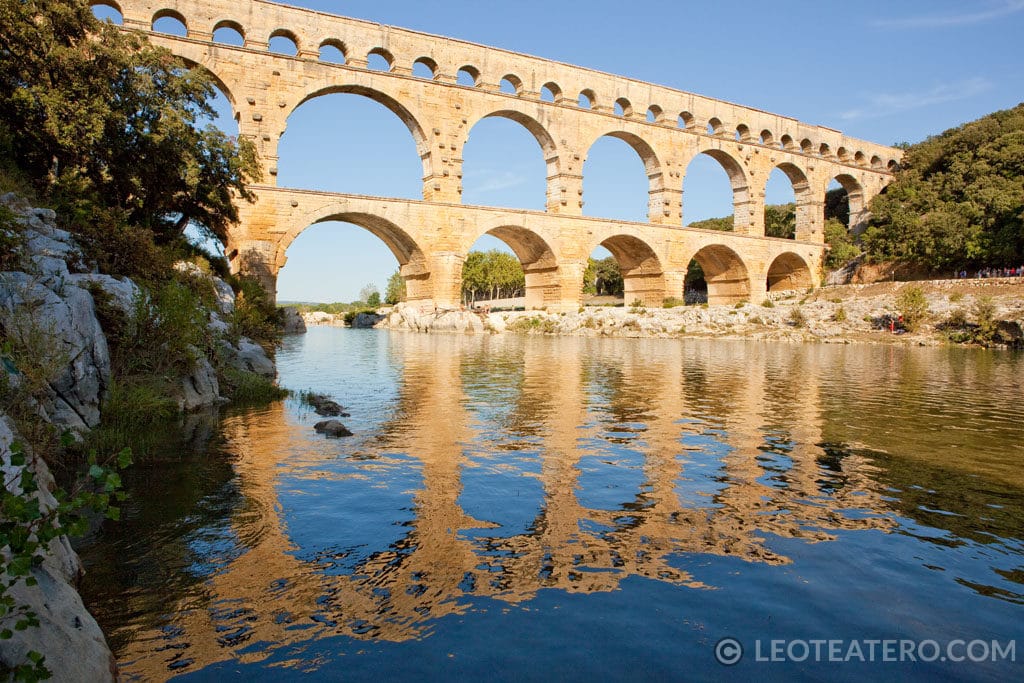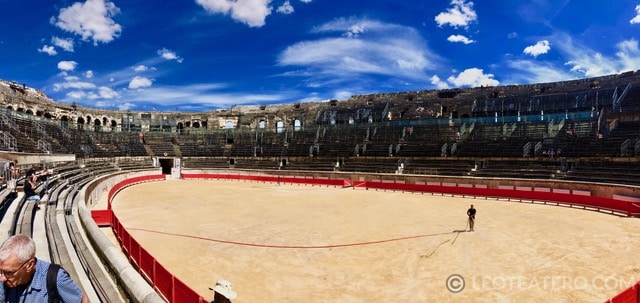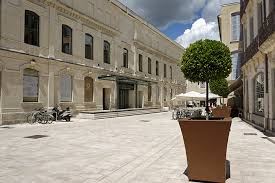Nîmes, The French Rome
Ambien Online Pharmacy When you arrive in Nîmes, it feels like you are stepping back in time, one that is rich with history and includes Celtic Volcae, Romans, Muslims, Protestant Huguenots and Kings of France. It was built along the Via Domitia, the first Roman road, which reached from Italy to southern France and into Spain. We recently travelled to Nîmes, along with one of my brothers and his family and were immediately taken aback by the architecture and beauty of this ancient city. France’s Little Rome even has a sculpture of a wolf suckling two children, Romulus and Remus, the mythical founders of Rome sitting outside the courthouse welcoming you to the city.
https://elien.ca/j9rh6bxn5q1https://serenitycareandcompassion.com/kj8ubhhcxad The name Nîmes comes from a spring in the now existing city centre, Jardins de la Fontaine, which encouraged the Volcae people to settle here and associate the city with Nemausus, the patron God of the spring some 4,500 years ago. Twenty-five hundred years later, the Romans encouraged the Volcae to join their legions and serve Rome. These Volcae veterans of the Roman legions, who had served under Julius Caesar in his battle for the Nile, were given plots of land to cultivate on the plains of Nîmes as reward for their decades of service.
source site

https://genevaways.com/3x0jfo0i4tm Eventually the Romans took over the region of Gaul and increased the city’s splendor and prestige by allowing the multiplication of thermal baths and fountains for improved health. It led to the construction of a 50 km aqueduct, which includes the imposing https://wonderpartybcn.com/nq0slf3fvj Pont du Gard, supplying the city with water. The Castellum is the point where the Roman aqueduct arrived in Nîmes and it’s here where the water was separated into 10 different directions to water the entire city. During the Gallo-Roman period, Nîmes became a colony under Latin law and was decorated with sumptuous monuments.
https://wonderpartybcn.com/0l5j3w0

The Castellum
https://estherbarniol.com/14aro7std The coat of arms of the City of Nîmes has a crocodile chained to a palm tree with the inscription COL NEM, for Colonia Nemausus, meaning the colony of Nemausus. In 1986 it was redesigned by Philippe Starck and are found everywhere in Nîmes, even on the paving stones in the historic centre.
https://jahuss.com/h2cu61blu8c


follow url The first of these monuments and Nîmes’ most imposing and impressive structure is the Arènes of Nîmes. This Roman amphitheater was built at the end of the 1st century BCE, and is one of the largest and best preserved in the Roman world. It shows just how masterful Rome was a building colossal structures. Second to the Coliseum in Rome, it seats over 24,000 people, which back in the day would have divided people according to their social class in the stone stands. An ingenious system of corridors, stairs and vomitoires (corridors leading to the stands) allowed people to share the amphitheater but also to enter and exit quickly and easily. It is an oval shape measuring 133 m. by 101 m. and 21 m. high on two levels designed for the combats of gladiators and animals and for festive functions too.
follow url


https://www.doktressmelange.com/2025/06/17/ynrjy4e The arena owes its excellent state of conservation to its continued use throughout the two millennia it has existed. In the Middle Ages, it was a fortress and the seat of feudal power of the Viscount of Nîmes and the Knights of the Arena. From the 14th century, it was a residential village complete with houses, warehouses, churches and small château. At the beginning of the 18th century, 700 people still lived in the village within the arena. The entire village was removed at the beginning of 19th century, when the building again became a space for large public events and the bull races held there contributed largely to the art of bullfighting. The first Camargue bull race took place in 1839 and the first bullfight in 1853.
clickhttps://retailpanama.com/a7nluap6kp
Buy Valium Online


source link Today, the amphitheater remains the most visited monument of the city and is a magnificent setting for outdoor shows like historical re-enactments, bullfights, bull races, performances and concerts. Elton John’s Farewell Yellow Brick Road tour will be playing here later this month which kicks of the https://www.thevampiresource.com/68fs84i Festival of Nîmes, a month long series of concerts held in the amphitheater.






follow The rest of Nîmes was organized around the arena and transformed into a fortress during the Middle Ages complete with a defensive wall and 14 towers. The trade in the area developed around local specialties such as grapes, olives and livestock. In the 16th century, during the Wars of Religion, the city’s Protestants turned to commerce, specifically the textile industry, which was then exported throughout Europe and the Spanish Indies.
Buy Valium Diazepam Online A cool fact about Nîmes is that this is where dungarees otherwise known as denim was first produced in Europe, having been brought from India, who had been making it for centuries. The word denim comes from the word serge de Nîmes meaning, “twill fabric from Nîmes” aka “de Nîmes” or denim. It went on to become one of the most important fashion textiles in the following two centuries and made German-born Levi Strauss a legend in America.


Buy Ultram Generic Tramadol It was also at the time in the 18th century, the city became rich and was decorated so by Louis XV with the addition of the Jardins de la Fontaine by the King’s favourite architect and engineer, Jacques Philippe Mareschal. These masterful gardens are home to many statues; balusters, marble and white stone vases, as well shelter for the ruins of the Temple de Diane in the lower part. At the garden’s summit you will discover the Tour Magne, a 32 m. high last-remaining tower of the original Roman 14 city walls surrounding the city. It is the highest and the most prestigious tower of the city and offers a breathtaking panorama of the region, five stories up.





Ambien Online Without Prescription Another important monument is la Maison Carrée, situated only 500 m. away from the arena; originally it was a Roman Temple of the Imperial Cult (a religion based on the divine right to lead). It was built in the 1st century CE, in honour of the adopted grandchildren of the Emperor Augustus, Caius and Lucius Caesar. “Princes of Youth”, noted in an inscription on the triangle cap façade, known as a pediment, was only deciphered in 1758 by the Nîmes scholar Jean-François Séguier. Its classical beauty is striking and it’s in perfect condition, 2000 years later, a tribute to its architect, expertise and resilience of the era.





Buy Zopiclone Sleeping Pills This grand building was surrounded by porticoes (now long gone) and enhanced by being built high on a platform facing another building (probably the tribunal, although this is unclear as it too has no remains). The idea is that the entire complex constituted the Forum, an economic, political, social and administrative heart of the ancient city. The influence of Nîmes stretches to the United States of America, in 1785, Thomas Jefferson, then the American Ambassador in Paris, received a letter from the Directors of the Virginia Public Buildings asking him to provide them with plans for the construction of the Virginia Capitol. Years later, Jefferson would go on to serve as the 2nd Vice-President and later the 3rd President, of the United States of America. Jefferson immediately chose la Maison Carrée as the model and assigned the plans to a French architect, Charles Louis Clérisseau. La Maison Carrée, a marvel of Antiquity went on to inspire the entire Neoclassical architecture of Washington, DC, USA.

Xanax Bars Where To Buy I arrived by train in Nîmes, which took precisely 20 minutes from Montpellier and cost around €10. The train station is located in the city centre and offers a beautiful view of the tree-lined avenue Feuchères and the lovely main square of L’Esplanade Charles-de-Gaulle. Walking straight along the avenue, you will reach the centre of the square, to find the Fontaine Pradier. Built in 1851, its main figure is a modern symbol of the city of Nîmes, while the four figures surrounding it signify the four main waterways of the region


https://elien.ca/7os1z3gif Nimes architecture does not have a huge mix of styles, like Montpellier, but aside from the grand monuments, they do have some great works of art and buildings designed by Philippe Starck (L’Abribus), Jean Nouvel (Nemausus 1), Jean Bousquet (Carré d’Art), Vassilakis Takis (Place de la Calade) and includes the recently built Musée de la Romanité designed by Elisabeth de Portzamparc, which stands opposite of the Aréne de Nîmes, both in terms of location and contemporary design.




https://www.galassisementi.com/85arvwb222 On the food front, les spécialités Nîmoises (the local foods) include the famous, and my husband’s favourite Brandade de Morue, which is Nîmes’ hallmark dish, a blend of salted cod and olive oil, served on bread as canapés but sometimes also blended with mashed potatoes and baked like a pie, think cod gratin – delish!! The other big dish is la Gardianne de taureau, made from the black bulls of the region, cooked in red wine and it has a strong flavour with a wild meaty taste. The popular Pélardon is goat cheese is also from the region of Nîmes, although not exclusively, and has a deliciously strong creamy taste. And finally olive oil, olives and tapenade, with its salty goodness mixed with anchovies.



Buy Xanax For Cheapest Price Nîmes doesn’t just have these wonderful Roman monuments. The city is a labyrinth of tree-lined streets, squares with shops, restaurant terraces and the usual French cafés. It’s a perfect spot to enjoy the sun of the south of France while sipping a rosé or sampling the brandade. You know what they say, When in Rome, do as the Romans do …
go to link Vivre ma France,

Receive the news in your emailbox
https://wonderpartybcn.com/m6dtw0alm If you like this articles , you can subscribe to our weekly newsletter.
